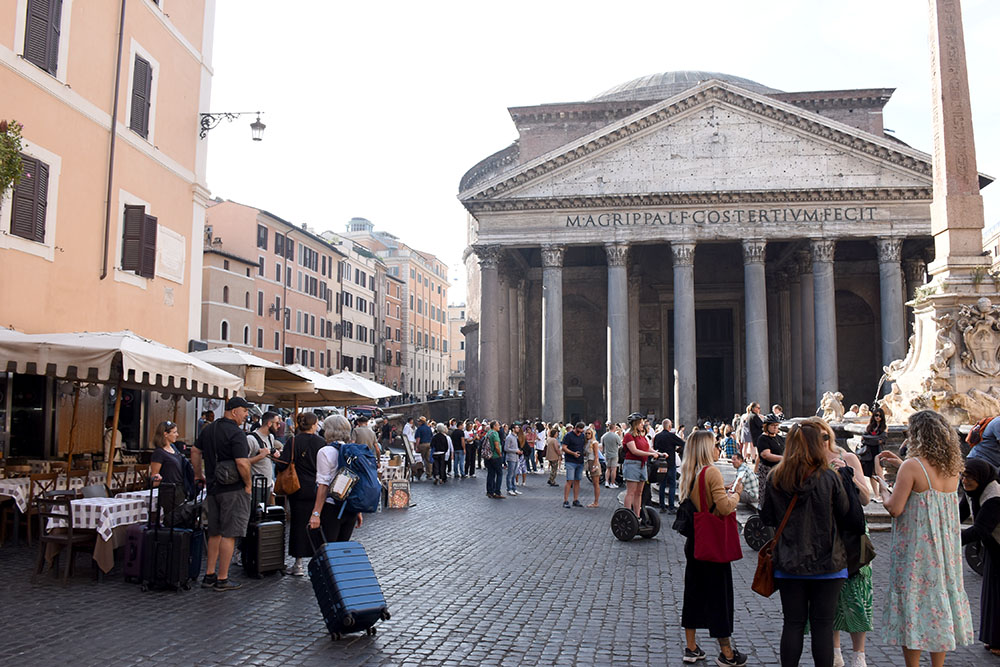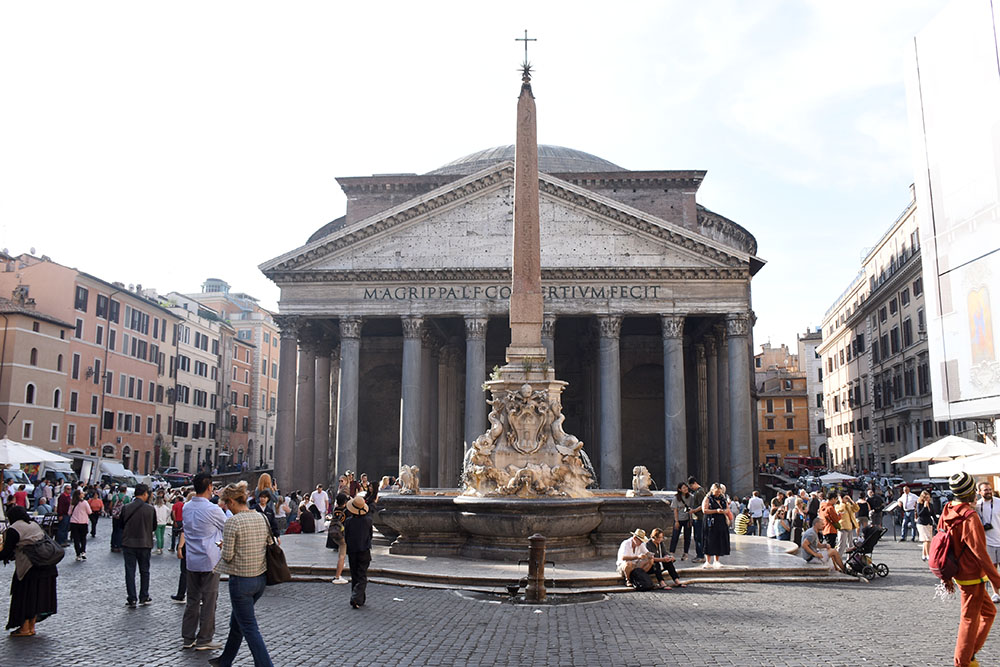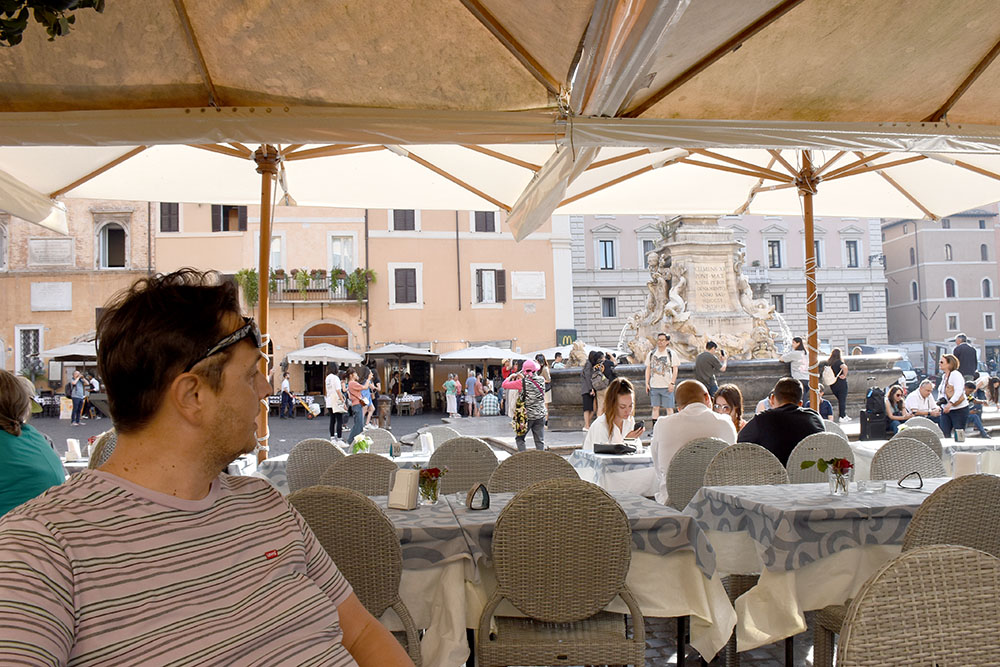Spanish Steps for Beginners
Spanish Steps for Beginners Just like everywhere in Rome, if you’re lucky enough to have nice weather, you’ll be greeted by rivers of tourists at the Spanish Steps, jos

The Pantheon is one of the oldest Roman landmarks alongside the Colosseum and the Roman Forum. Tucked away between buildings, it surprises visitors with its appearance as they step onto the square in front of this magnificent structure from the narrow streets. It’s located in the old part of the city, not far from Piazza Navona, making it easily accessible for anyone in the center of Rome to visit this lively square and enjoy the view of the Pantheon. Given its central location near many hotels, here are our suggestions if you want to stay close to the Pantheon.
It’s common for the square in front of the Pantheon to be lively and crowded. You can also enjoy the gardens of restaurants overlooking the square, although we recommend seeking rest and refreshment in one of the narrow streets nearby. Nevertheless, for some, the view of the Pantheon takes precedence over prices, crowds, and constant chatter.
During the tourist season, it’s typical to queue for entry to the Pantheon, although you won’t need more than a few tens of minutes to enter and explore the interior. Keep in mind that there’s an entrance fee, and booking tickets online is a smart move.

The word “Pantheon” in Greek means “temple of all gods,” and it was built during the reign of Emperor Augustus for his close friend and military leader, Marcus Agrippa.
The Pantheon is just one part of his plan to build three structures in that part of the city: the Baths of Agrippa, the Basilica Neptunus, and the Pantheon. This was around 20 BCE.
Later, the Pantheon was burned and destroyed during a great fire that engulfed Rome around 80 CE. Reconstruction began around 114 CE during the reign of Emperor Trajan and was completed during the time of Emperor Hadrian, who preserved the original inscription on the building:
in honor of its first creator, Marcus Agrippa. This inscription in Latin means “Marcus Agrippa, son of Lucius, made [this building] when he was consul for the third time.”
Later, in 609 CE, Pope Boniface IV received this building as a gift from Byzantine Emperor Phocas and converted it into a Catholic church dedicated to St. Mary and the Martyrs on May 13. This event allowed the temple to survive during the early Middle Ages when all other ancient buildings were mostly plundered and demolished.
Despite the transformation of the Pantheon into a church, Byzantine Emperor Constans II, who visited Rome in July 663, looted and took with him to Constantinople everything of value, including the church’s bronze roof. Over the centuries, looting and destruction continued, with even marble stripped from the facade and some decorations from the columns ending up in various museums.
Throughout its long history, the Pantheon has been the final resting place for some significant historical figures, including kings of Italy: Victor Emmanuel II and Umberto I, as well as Queen Umberta, Margarita. The famous painter Raphael is also buried in the temple.
Originally, the building was approached by stairs, but later construction raised the ground level, eliminating them. This architectural detail, along with the adaptation of the design due to the lack of columns, highlights the complexity of construction and the adaptability of architects in antiquity. The influence of the Pantheon on later architecture is significant, inspiring numerous architects, such as Brunelleschi, with its grand proportions and innovative construction, and it remains one of the most famous architectural achievements of the ancient world.

Metro: the nearest stop is Barberini (line A), about 650 metres from the Pantheon.
Bus: n° 30, 40, 62, 64, 81, 87 and 492: get off at the Largo di Torre Argentina stop which is about 450 metres from the Pantheon
The Basilica is open all days from 9.00 am to 7.00 pm. Last entrance 30 min before closing
Closed at 1st January, 15 August and the 25th December.
Author: Yaga – drop a comment on X 😉
Spanish Steps for Beginners Just like everywhere in Rome, if you’re lucky enough to have nice weather, you’ll be greeted by rivers of tourists at the Spanish Steps, jos
Vatican Basic Info The Vatican is a city-state located in the center of Rome. Although the Vatican is a state, you don’t need a passport, special permit, or even a ticket to
ATP Rome – Don’t miss it! The ATP tennis tournament in Rome is one of the most well-known events, alongside Monaco and Madrid, serving as a prelude to the Roland Garros, the on
Pantheon The Pantheon is one of the oldest Roman landmarks alongside the Colosseum and the Roman Forum. Tucked away between buildings, it surprises visitors with its appearance as
Trevi Fountain One of Rome’s most famous landmarks is the Trevi Fountain. This is evidenced by the daily crowd of people flocking around the fountain to take photos and selfi
